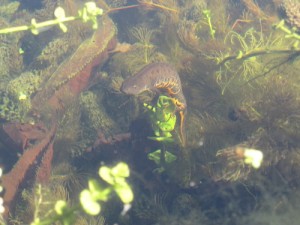As spring unfurls, hedgerows are greening up, garden borders are crammed with new shoots, noisy birds are busy nest building and raising young. Warmer temperatures get the lawn growing, dandelions flowering and hungry insects seeking out nectar and juicy shoots. So what can we do to keep nature in balance and to encourage wildlife in our gardens?
1 Provide overwintering sites for insects (and their eggs), bats and amphibians, for example leave access to sheds and barns, south facing dry stone walls, ‘wildlife hotels’, log or stone piles which can be be ornamentally stacked and therefore act as a focal point. Avoid cutting back everything in the garden in the autumn instead tidy up in March, composting all debris or making a log pile with the woody material.
2 Value trees, hedges and large shrubs in your garden (or plant some), these are very important to birds for shelter, nesting and as a source of food since insects will live, feed and breed in the crevices, on the leaves and flowers. Birds eat huge numbers of caterpillars and some even time the incubation of their eggs to coincide with caterpillar emergence
3 Grow a range of early flowering plants such as Lonicera fragrantissima, Daphne, snowdrop, Scilla, Cyclamen, Hellebore, Pulmonaria, Begenia to provide nectar for early emerging insects (for example honey bees, bumble bees, butterflies)
4 Create a pond, the larger the better however even a small pond will attract some wildlife. A pond without fish and with at least 1/3 of the base covered in submerged oxygenating pond plants is ideal. In my pond I have a healthy population of newts including great crested newts.
5 Don’t be too tidy in the garden, an area of long un-mown grass is important for a wide range of moths and butterflies (moths being good bat food), it will also save time and money. Mown paths through long grass look good, and can lead to an attractive seat or a glade with some furniture. Mid summer and in October this can be cut however consider cutting it a bit higher than the rest of the lawn for permanent interest and structure to the garden.
